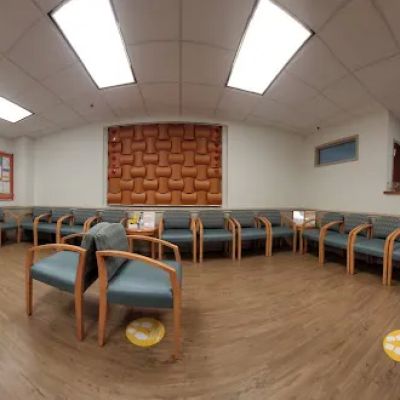- 1-Secondhand-Smoke-Definition-and-Health-Risks
- 2-Impact-of-Secondhand-Smoke-on-Heart-Disease
- 3-Biological-Mechanisms-Linking-Exposure-to-Heart-Problems
- 4-Vulnerable-Populations-and-Exposure-Concerns
- 5-Real-Life-Stories-Highlight-Dangers-of-Passive-Smoking
- 6-Prevention-and-Reducing-Secondhand-Smoke-Exposure
1. What Is Secondhand Smoke and Why Is It Dangerous?
Secondhand smoke, also known as passive smoke or environmental tobacco smoke, is the combination of smoke exhaled by smokers and the smoke released from the burning end of cigarettes, cigars, or pipes. Unlike firsthand smoking, individuals exposed to secondhand smoke do not actively inhale tobacco themselves, but the effects on health can be just as severe.
The dangers of secondhand smoke are well-documented. According to the Centers for Disease Control and Prevention (CDC), secondhand smoke contains over 7,000 chemicals, hundreds of which are toxic and about 70 known to cause cancer. Among the most alarming health impacts is its contribution to heart disease, the leading cause of death worldwide. For non-smokers, even brief exposure to secondhand smoke can increase the risk of heart attacks and other cardiovascular problems.

1.1 The Global Burden of Secondhand Smoke Exposure
Worldwide, millions of people suffer from illnesses linked to secondhand smoke exposure every year. Policies restricting smoking in public spaces have helped, but exposure remains common in homes, workplaces, and social environments, particularly affecting vulnerable groups such as children and elderly individuals.
Atlanta Heart Specialists
atlanta heart specialists
4375 Johns Creek Pkwy #350, Suwanee, GA 30024, USA

2. How Secondhand Smoke Exposure Increases Heart Disease Risk
Research consistently shows that secondhand smoke significantly elevates the risk of coronary heart disease in non-smokers. Studies reveal that exposure can increase the risk of heart disease by 25-30%. This occurs because the toxic chemicals in secondhand smoke accelerate the buildup of plaque in arteries, impair endothelial function, and promote blood clot formation, all of which compromise cardiovascular health.
Even short-term exposure affects heart rate variability and blood pressure, causing stress on the heart and blood vessels. Over time, these effects accumulate, increasing the likelihood of heart attacks, stroke, and other serious cardiovascular events.
3. Biological Mechanisms Behind the Heart Risks of Passive Smoking
The harmful compounds in secondhand smoke trigger inflammation in the cardiovascular system, which plays a key role in the development of atherosclerosis. Carbon monoxide, a common component of tobacco smoke, reduces oxygen delivery to the heart muscle, forcing it to work harder and increasing strain.
Nicotine stimulates the sympathetic nervous system, leading to elevated heart rate and vasoconstriction (narrowing of blood vessels). Together, these effects disturb the delicate balance required for healthy heart function. Moreover, secondhand smoke interferes with the blood’s ability to clot properly, raising the risk of thrombosis and sudden cardiac events.
4. Vulnerable Groups Particularly at Risk from Secondhand Smoke
Certain populations suffer more severely from the effects of secondhand smoke exposure. Children exposed in their homes are at increased risk of developing heart conditions later in life, as well as respiratory illnesses. Older adults and individuals with pre-existing heart disease or diabetes face higher risks of acute cardiac events when exposed to passive smoke.
Pregnant women exposed to secondhand smoke also face complications including higher chances of miscarriage, low birth weight, and congenital heart defects in infants. This makes it critical to limit exposure in these sensitive groups through effective public health measures and personal choices.
5. Real-Life Cases Illustrating the Heart Risks of Secondhand Smoke
Consider the case of Linda, a non-smoker who worked in a smoky bar environment for years. Despite never smoking herself, she developed coronary artery disease in her early 50s. Her cardiologist attributed much of her condition to chronic secondhand smoke exposure. Linda’s story is a powerful reminder that passive smoking carries serious heart risks, even in individuals who never touched a cigarette.
Another example involves a family where a parent smoked indoors. The children experienced early signs of cardiovascular strain and elevated blood pressure by their teenage years, underscoring how household exposure can affect heart health long-term.
6. Strategies to Prevent Heart Disease by Reducing Secondhand Smoke Exposure
Protecting yourself and loved ones from secondhand smoke is essential to lowering heart disease risk. The first step is to create smoke-free environments at home and work. Advocating for smoke-free policies in public spaces further reduces exposure for entire communities.
For individuals living with smokers, open communication about the risks and encouraging quitting or smoking outdoors away from others can drastically decrease passive smoke exposure. Using air purifiers and ventilating indoor spaces also helps minimize residual smoke particles.
Healthcare providers recommend regular cardiovascular screening for those with known exposure to secondhand smoke to detect early signs of heart disease and intervene promptly.
For comprehensive information and tailored heart health products designed to mitigate risks related to secondhand smoke, visit HeartCare Hub. Their expert guidance and selection of resources support your journey toward a healthier heart free from the dangers of passive smoking.





















Deborah Heart and Lung Center
deborah heart and lung center
200 Trenton Rd, Browns Mills, NJ 08015, USA